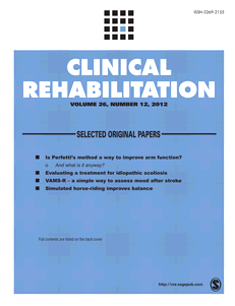
Physical Therapy & Rehab
High-velocity versus low-velocity training in women with hip osteoarthritis
This report has been verified
by one or more authors of the
original publication.
Clin Rehabil. 2014 Jan;28(1):48-58. doi: 10.1177/0269215513492161. Epub 2013 Jul 3
46 women with various severities of hip osteoarthritis were randomized to undergo an 8-week home-based training program of either high-velocity or low-velocity exercises. The purpose of this study was to determine if high-velocity training offered any advantages over low-velocity training. Physical performance measures, muscle strength, power, thickness and composition, and clinical outcomes were measured at program completion. Statistically significant effects of high-velocity training were displayed in the Timed Up-and-Go test and composition of the gluteus maximus, although all other outcomes were similar between the high-velocity and low-velocity groups.
Unlock the full article
Get unlimited access to OrthoEvidence with a free trial
Start TrialCritical appraisals of the latest, high-impact randomized controlled trials and systematic reviews in orthopaedics
Access to OrthoEvidence podcast content, including collaborations with the Journal of Bone and Joint Surgery, interviews with internationally recognized surgeons, and roundtable discussions on orthopaedic news and topics
Subscription to The Pulse, a twice-weekly evidence-based newsletter designed to help you make better clinical decisions
Exclusive access to original content articles, including in-house systematic reviews, and articles on health research methods and hot orthopaedic topics
Or continue reading this full article
Register Now

Subscribe to "The Pulse"
Evidence-Based Orthopaedics direct to your inbox.





































